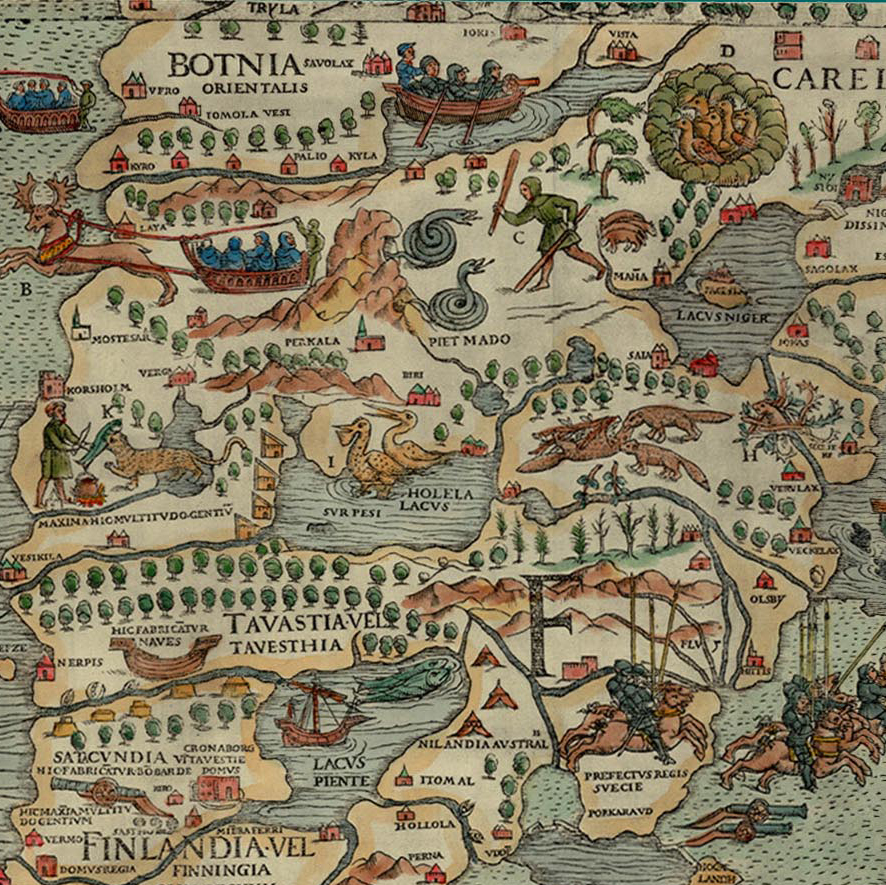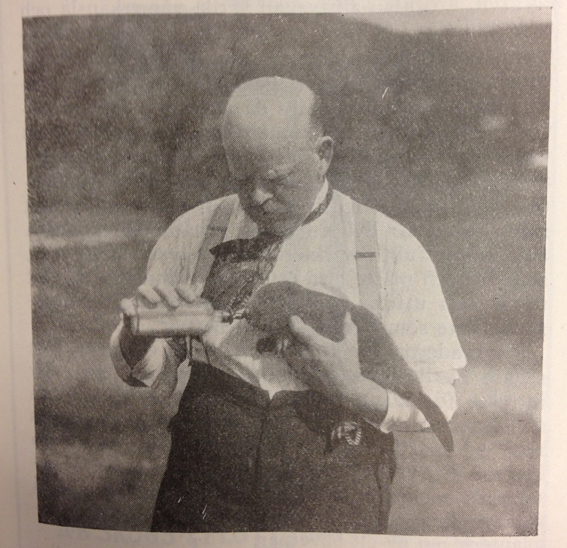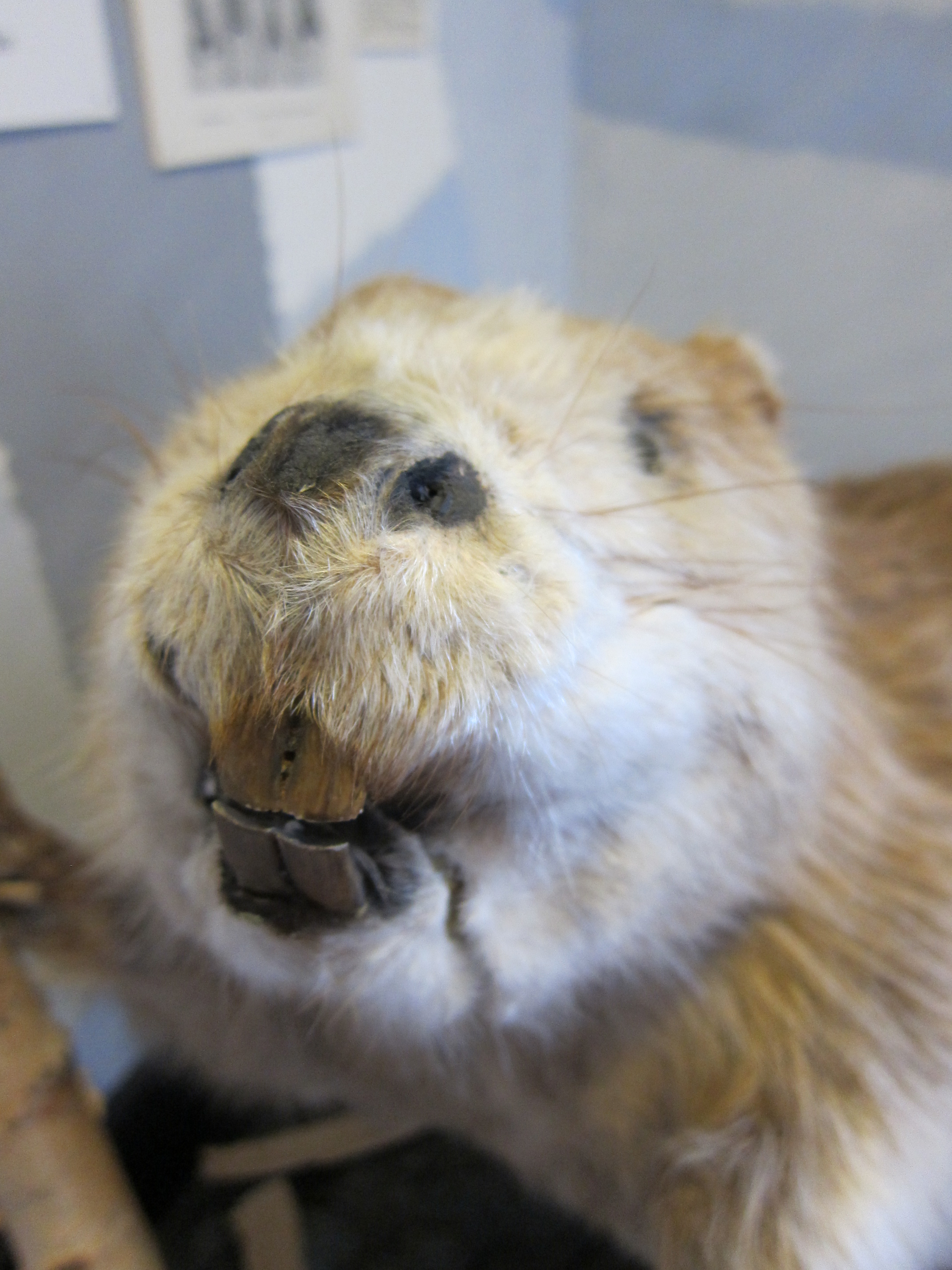
Olaus Magnus’ map
Today I was at a symposium “Understanding North” hosted here at Umeå University and heard a paper about Olaus Magnus’ 16th century depictions of the northern Sami people. It reminded me that I had gathered some of his material, but hadn’t really looked at it. So I decided to go through it.
Olaus Magnus, who was born in Linköping, Sweden, in 1490 produced a map of Scandinavia in 1539 titled Carta Marina (images from the map by section are available from the James Ford Bell Library) and the first comprehensive book on Scandinavia in 1555 titled Historia de Gentibus Septentrionalibus (you can read the whole text in Latin on Projekt Runeberg).
The map includes a group of beavers moving a log via the beaver’s supposed method of having one animal lie on its back holding the log while the others drag their comrade. They are dragging the log (and beaver) to a beaver lodge made roughly of branches with leaves, from which another beaver is popping out his head. The lodge is placed on a small waterway.

The whole scene is placed in Karelia, an area currently divided between Russia and Finland. There are no beavers elsewhere : not in Norway, which apparently Olaus thought was so urbanized that it gets only little towns all over the map and no animals; or Sweden where there are lynx, wolves, and reindeer, but no beavers.

According to the Historia, there was “a great abundance of beavers in the North”. Olaus compared the beavers in the north to the populations on the Rhine, Danube, and the “marshes” of Moravia, saying that there were more beavers in the north because the waterways were quieter and non-navigable. It’s interesting to note that when Alarik Behm talked about beavers in 1920 before the reintroduction, he also compared the heavily populated Rhine and Danube areas which still had beavers to rural Sweden which had lost theirs, claiming that if the beavers can live in the busy areas, certainly they could live in Sweden.
In spite of Olaus’ claim that there were beavers everywhere, Finland is the place that gets the beavers on this 1539 map. It turns out that Finland’s beaver history follows very closely the Swedish one. The last beaver in Finland died in 1868 – just 3 years before the last confirmed beaver in Sweden. In 1935-36, only 13 years after the first Swedish reintroduction, 19 beavers from Norway were reintroduced in Finland. (I’m guessing that these beavers were from the same source in Aamli since it appears that those guys did some beaver marketing, but I’ll have to do some more work to confirm that.)
The big mistake was that the next year, 7 North American beavers were also set out in Finland. I’ve read the excuse for the Finnish Castor canadensis introduction as “it was not known that the two beavers belonged to two different species”. Such a claim doesn’t seem to pass historical muster — the scientific work being done at Skansen clearly used different scientific names and these were the accepted names for the two types of beaver; I also know that Skansen had regular dealings with zoologists in Finland so the Finns were plugged into the larger scientific networks. Nevertheless, the North American beavers were let go and estimates in 1999 were that the North American beaver population had reached 12,000 whereas the European beaver population was only 1,500.
Olaus’ placement of the beavers in Karelia/Finland probably had a lot to do with the way he imagined wilderness. That whole section of the map is full of animals, including dangerous ones attacking people and livestock. Only the far northern parts of Sweden have a similar ‘wild’ quality. The beaver, which the mapmaker says preferred the quiet rural stream, is placed in a relatively remote section away from urban settlement. Those ‘wilderness’ places were the same types of environments that the 20th-century restorationists sought out for their reintroduction projects — places off the beaten path but on their maps.



